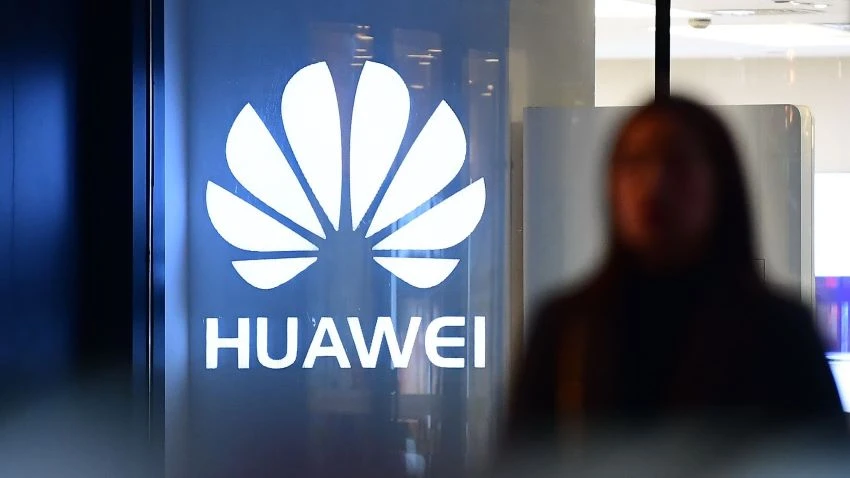
The day before the U.S. was due to announce whether it would extend a licence for companies to work with Chinese telecoms business Huawei, President Donald Trump made his feelings clear: "Huawei is a company we may not do business with at all," he said Sunday night.
Trump has flip-flopped on Huawei several times, going from conciliatory to furious and back again, but these moves have had little or no impact on the trajectory of an intensifying U.S.-China technology rivalry.
More importantly, the relaxing of a tech ban on Huawei does nothing to extract global companies from a much more pervasive web of export controls that will change how and where they operate and who they choose as strategic partners.
In the U.S., the Department of Commerce has been tasked with establishing controls on so-called emerging and foundational technologies that can be considered essential to national security. A review process is underway that aims to add to a rapidly expanding list of items on the Commerce Control List.
Foundational technologies cover virtually all of the areas vital to the industries of the future: data analytics, navigation, three-dimensional printing, robotics, drones, machine learning and advanced computing, surveillance technology, logistics, microprocessing technologies and many others.
The primary reason an item is added to a control list is based on the concept of "dual use," meaning that although the technology is being sold for a commercial application, it could also be used for military purposes -- and virtually any of the cited emerging and foundational technologies easily fall under this designation.
The growing web of export controls is not limited to U.S. laws. The EU, for example, enforces its own export control framework and, along with Australia, Japan, South Korea and other countries, is a member of the Wassenaar Arrangement, a multilateral framework dedicated to the voluntary enforcement of export controls on dual-use and military goods.
Beijing's state-backed technology initiatives are drawing increased scrutiny from the U.S. and its allies, thus there will probably be more alignment around the enforcement of export controls by the EU, the U.S. and others regarding dealings with Chinese entities.
This new regulatory landscape will fundamentally change how companies do business.
Because of strict accountability requirements, companies selling dual-use items must commit to tracking every single vestige of "controlled" technology embedded in a product -- from its source all the way to an end-user.
As a growing number of emerging and foundational technologies are likely to be added to control lists, this will require companies to raise the bar significantly higher when it comes to achieving transparency in global value chains.
Businesses that cannot or choose not to implement full traceability around export controls will have to remove themselves from affected supply chains and risk being locked out of vital tech ecosystems. This will accelerate the fragmentation and reconfiguration of global supply chains already underway because of U.S.-China tariff escalations.
As the global web of export control laws become more pervasive, businesses will need to reassess their risk exposure in seemingly innocuous dealings with academic and research-focused institutions.
Consider a situation where a research student holding a passport from a sanctioned country -- Iran, for example -- has access to controlled technology in a research project at a top global university. That institution and participating companies could suddenly be subject to fines and punitive action for export control violations.
If U.S.-China relations continue to fray, Chinese nationals studying or teaching abroad could be singled out and placed on the U.S. Specially Designated Nationals and Blocked Persons List. This would have a chilling effect on the global tech R&D landscape, and academia in general.
The number of Chinese students in the U.S., for example, exceeded 360,000 in 2017-18 and many are in the STEM areas of research. Beijing has already warned its students and academics in the U.S. that their visas may not be granted or extended as a result of ongoing trade frictions.
Businesses will also need to start paying closer attention to what information is shared with financial institutions. Imagine a tech company is seeking funding from a bank to build a manufacturing facility. If, during the review process, controlled blueprints, designs, software or specifications were shared with persons on a restricted entity list, there would be an export controls violation.
Looking ahead, companies will face an increasingly risky business environment. Ever-expanding export controls mean businesses must become self-policing law enforcement proxies and deploy smarter technology -- such as data-emitting micro-tags embedded in equipment -- to track items and safeguard against export control violations.
More transparent value chains will mean more costs and some businesses will not have the resources to cope with these heightened compliance requirements, thus they will have to decouple from existing relationships -- either with American or Chinese partners.
For their part, governments would be wise to show restraint in the escalation of export controls, particularly as these can have unintended effects on a broad range of stakeholders.




















